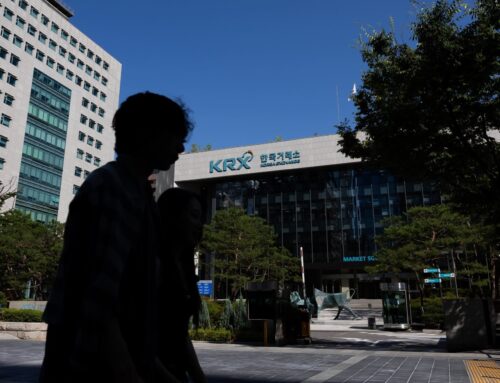Issues of the Environment: The Ecology Center in Ann Arbor celebrates the 20th anniversary
April 16, 2025
Overview
- The Ecology Center in Ann Arbor, Michigan played a crucial role in raising awareness about the harmful effects of mercury switches in older vehicles. They were at the forefront of efforts to establish a national recovery program that aimed to remove mercury from cars before they were recycled, preventing widespread contamination.
- Mercury was once used in automotive components like lighting systems and anti-lock braking systems, where it functioned as a switch. When these cars were disposed of improperly, the mercury could leach out, leading to toxic pollution in landfills and recycling facilities. Since the launch of the National Vehicle Switch Recovery Program in 2006, over 500,000 mercury switches have been recovered from end-of-life vehicles. Each switch contains about 2-4 grams of mercury, which equates to 7+ ton of mercury kept out of landfills.
- In 2006, the Ecology Center helped bring together auto manufacturers, recyclers, and environmental organizations to create the National Vehicle Switch Recovery Program. This program was designed to remove mercury switches from vehicles before they were recycled, significantly reducing environmental contamination.
- As the program celebrates its 20th anniversary, it’s clear that it has been a major success. Millions of mercury switches have been safely removed from vehicles, which has contributed greatly to reducing mercury pollution in landfills, waterways, and ecosystems.
- The success of the Vehicle Switch Recovery Program has set a precedent for environmentally responsible recycling practices, serving as a model for other industries. It also marks a significant achievement in making vehicles and manufacturing more sustainable, with no mercury used in modern cars today.
Transcription
David Fair: This is 89.1 WEMU, and on Issues of the Environment today, we’re going to celebrate an anniversary and discuss progress in keeping mercury out of our landfills and ecosystems. I’m David Fair, and this year marks the 20th anniversary of the National Vehicle Switch Recovery Program. Two decades ago, the Ann Arbor-based Ecology Center brought together auto manufacturers, recyclers and environmental organizations to create a program aimed at removing mercury which is from vehicles, before they were recycled, significantly reducing environmental contamination and impact. How has it worked? Well, our guest can fill us in. Jeff Gearhart is Research Director for the Ecology Center, and thanks so much for the time today, Jeff! I appreciate it!

Jeff Gearhart
Jeff Gearhart: Thanks for having me, David!
David Fair: Thinking back to 2006, it seems a little bit like forever ago and a little bit like just yesterday. Can you take us back those two decades and give us an idea of how prevalent and dangerous our treatment of mercury in auto vehicles was?
Jeff Gearhart: Yeah, I think I’ll take you back even a little farther, David. I think there were two kind of paired reports that led to this program being established. And one goes back to 1965 when, unsafe at any speed, the in-design dangers in the American automobile was released by Ralph Nader. And that really highlighted some of the baked-in design problems in vehicles. And then in 2006, we released kind of a partner study called “Toxic at Any Speed,” looking at chemicals and hazards in cars. And as part of that study, we identified a wide range of chemical hazards that were baked into cars, including these mercury-containing switches, lead, issues with plastics, all of those issues that kind of have followed through since the 1960s and had not been fully dealt with. So, we identified these small mercury switch lights. You open up your hood. The light would flick on, so you could see in the engine compartment in the trunk in the back of the car. It was a simple tilt switch that had a gram of mercury in it that the industry had put millions and millions in vehicles over the last 30, 40 years.
David Fair: Ralph Nader wasn’t all that popular at the time. Change always comes with pushback. There is always resistance, being more proactive. Was that true when it came to mercury as well?
Jeff Gearhart: Yeah, I think it was the same issue, both not acknowledged, not understood by regulators, industry not acknowledging it as an issue. And the issue we raised in our 2006 study is hazards like mercury should be viewed as a design flaw. If you design something with a mercury-containing device in it, that’s going to end up a steel plant and contaminating the environment. There’s something going on in the design side of how a product–a car, in this case–is being designed. And so, we really emphasized the need to move beyond kind of your baseline engineering, like how fast or other issues related to the car, and incorporate environmental, economic, and social factors when you’re engineering a vehicle. So, we wanted to both recover the mercury, prevent it from the environment, but we got to change how we design vehicles. And that tracks back to the work in the 60’s that Nader did. And we got seat belts and all the other safety factors that weren’t considered in early vehicles. Same thing as with our success in this program of recovering tons of mercury over the course of the program. We recovered about eight tons of mercury. 7 million switches were recovered by auto dismantlers as part of the program. The original program was set up, and we built in a concept called “producer responsibility,” in which we created an agreement with the auto industry, the steel industry, as well as recyclers to contribute to a program that actually paid dismantlers to pull switches out of vehicles. $1 a switch, a $4 million fund originally, and that resulted in quickly triggering really high recovery rates. But on the other hand, it also sent a financial signal to the industry that these types of design problems are an issue, and we need to kind of correct that process.
David Fair: Our Issues of the Environment conversation with Jeff Gearhart continues on 89.1 WEMU. Jeff is Research Director at The Ecology Center, and we’re talking today about the 20th anniversary of the National Vehicle Switch Program. When we talk about successes, the ripples reach out even further. Are there any new vehicle parts that have mercury switches now?
Jeff Gearhart: We, as part of this program, got a complete commitment of the industry to eliminate mercury-containing devices and vehicles. So, that was a really great kind of a blanket ban. The second part is really pushing the industry that invest in green chemistry and green engineering kind of practices in terms of design, back to the design issue. and where we’re really considering hazard as inherent property of chemicals. And if you have hazard there, how do you design away from that? So, yeah, we phased out the worst stuff. And also many of the companies have green chemistry–green engineering programs–that are part of really looking proactively at the entire vehicle. So, we really think that, in addition to keeping the mercury out of the environment, that’s where the real money is here, in terms of how do we change vehicles to the future. We still have challenges to meet there. But I think we broadly have created the types of investment in people and methods to improve vehicles.
David Fair: Does this mean that the National Vehicle Switch Program now has an end date or end-of-life target?
Jeff Gearhart: Yeah. The program was started in 2006, and, as you know, in Michigan and we know the issue with our rust in our vehicles, over time, we have probably a fifteen-year, twenty, if you’re lucky, lifespan for vehicles on the road here.
David Fair: Right.
Jeff Gearhart: So, what has happened is that we stop putting mercury switches in vehicles. We’re slowly reducing the population of vehicles with those switches. We anticipate, within another two to three years, we’re going to have dealt with the vast majority of all the vehicles that had mercury switches in it. So, the program will sunset at that point.
David Fair: Once again, we’re talking with the Ecology Center’s Jeff Gearhart on 89.1 WEMU’s Issues of the Environment. You mentioned the advent of green chemistry and how vehicles are being manufactured today. Where else is this being applied? PFAS? Microplastics? Where else can we see this kind of work expanding?
Jeff Gearhart: Yeah, I think the Mercury Switch program is a really great example of both doing mitigation and addressing design problems we created but also kind of baking back in doing better design. The industry has a lot of challenges, so I’ll just mention a few. One is the use of PFAS as a refrigerant in car air conditioners. There’s a chemical called trifluoroacetic acid. It’s a global contaminant. One of the things we’re working on is trying to get industry to switch out to natural refrigerants. Again, it’s a design problem where we utilize PFAS, which people are very familiar with, that can leak and be released from these systems, and it’s global environmental contaminant. That’s an example. Microplastics–tires end up being responsible for about 28% of microplastics entering the environment. We estimate probably around 6 million tons of tire fragments generated a year. So, we have a really urgent design and mitigation issue with tires that needs to be addressed. And then, the other thing is batteries. PFAS is extensively used in batteries for electric vehicles and other applications. And with the wildfires that happened in California, in the Los Angeles area, we had a lot of electric vehicle fires that we’re pretty concerned about the release of PFAS from the batteries and those uncontrolled fires. So, there’s a real need to address, I call some of these, Trojan horse issues of chemical hazards that are in vehicles that we need to apply these kind of design criteria to and get them out of vehicles.
David Fair: Do you view the already realized and the potential rollbacks in federal environmental regulations as a threat to achieving the kind of successes this current program has had when you apply it to other areas?
Jeff Gearhart: Yeah. I mean, I think the rollback of these programs are a severe threat, in terms of establishing and continuing regulatory baselines and encouraging better design. So, we’re worried about that. I do want to emphasize that green chemistry has really taken off in the last couple decades. U of M-Flint, in 2017, I believe, started the first undergrad green chemistry program. Almost every four-year college in Michigan has curriculum in green chemistry. So, I want to emphasize one of the hopeful things is we are going back to the base education, both in K through 12 and at university level, of retraining our engineers and chemists to try to address these issues. And this is going to be a generational change. But as we begin to fill in the ranks in industry of engineers that are trained to address these issues, that’s going to have its own momentum. So, I think part of the reason we wanted to celebrate this anniversary is I think it’s a big success. It shows what’s possible and also to highlight things like the movement toward the green chemistry at universities and K-12 schools as a real hopeful thing that I think is going to continue regardless of what happens with federal regulations.
David Fair: I always like to end on an optimistic note, and you just provided it. So, thank you very much for the time and the conversation, Jeff! I appreciate it!
Jeff Gearhart: Thanks, David!
David Fair: That is Jeff Gearhart, Research Director at the Ann Arbor-based Ecology Center. He’s been our guest on Issues of the Environment. For more information on the work of The Ecology Center and the 20th anniversary of the National Vehicle Switch Recovery Program, pay a visit to our website at wemu.org. Issues of the Environment is produced in partnership with the Office of the Washtenaw County Water Resources Commissioner. You hear it every Wednesday. I’m David Fair, and this is your community NPR station, 89.1 WEMU FM. Celebrating 60 years of broadcasting from the campus of Eastern Michigan University!
Non-commercial, fact based reporting is made possible by your financial support. Make your donation to WEMU today to keep your community NPR station thriving.
Like 89.1 WEMU on Facebook and follow us on X (Twitter)
Contact WEMU News at 734.487.3363 or email us at studio@wemu.org
Search
RECENT PRESS RELEASES
Related Post




